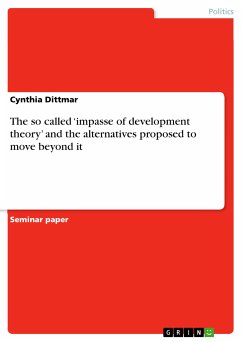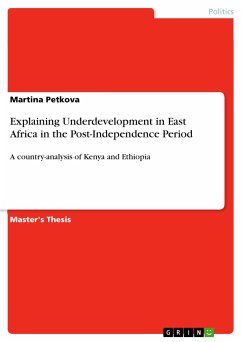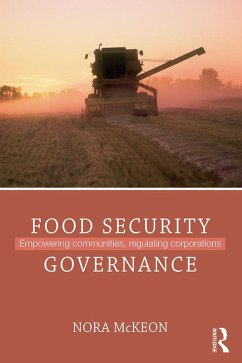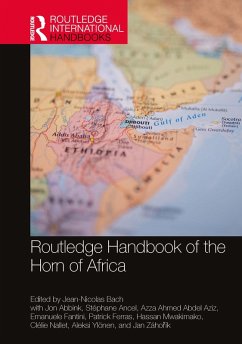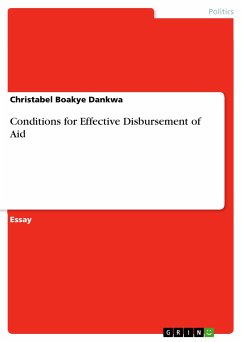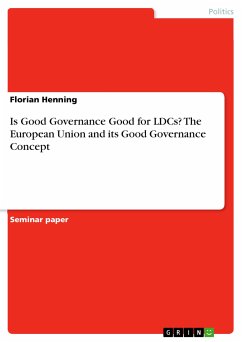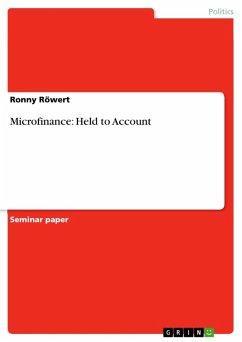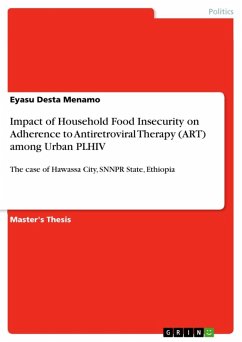
Impact of Household Food Insecurity on Adherence to Antiretroviral Therapy (ART) among Urban PLHIV (eBook, ePUB)
The case of Hawassa City, SNNPR State, Ethiopia
Versandkostenfrei!
Sofort per Download lieferbar
Statt: 54,99 €**
44,99 €
inkl. MwSt. und vom Verlag festgesetzt.
**Preis der gedruckten Ausgabe (Broschiertes Buch)
Alle Infos zum eBook verschenkenWeitere Ausgaben:

PAYBACK Punkte
0 °P sammeln!
Master's Thesis from the year 2012 in the subject Politics - Topic: Development Politics, grade: Excellent , Hawassa University, course: Development Management , language: English, abstract: Background: ARV adherence is a strong predictor of biologic (virologic and immunologic) and clinical outcomes in HIV, including quality of life, HIV progression, hospitalizations, and death. Consistent adherence to antiretroviral therapy (ART) is the cornerstone of effective HIV treatment. This study explores the interrelationship between food insecurity and access and adherence to ARV treatment. Such stud...
Master's Thesis from the year 2012 in the subject Politics - Topic: Development Politics, grade: Excellent , Hawassa University, course: Development Management , language: English, abstract: Background: ARV adherence is a strong predictor of biologic (virologic and immunologic) and clinical outcomes in HIV, including quality of life, HIV progression, hospitalizations, and death. Consistent adherence to antiretroviral therapy (ART) is the cornerstone of effective HIV treatment. This study explores the interrelationship between food insecurity and access and adherence to ARV treatment. Such studies will help inform policy maker in the study area on ways of improving or maintaining adherence to ARV and scale up the treatment level. Objective: The main objective of the study is to assess the prevalence of ARV adherence and associated factors (with particular focus on household food insecurity) among urban PLHIV. Method: PLHIV association based cross-sectional study was conducted from January, 2012 to May, 2012 in Hawassa city. Both quantitative and qualitative data were used to triangulate one with another. Adult PLWHA on ARV therapy for at least 3 months were the study participants. A purposive sampling method used to select the study participants. Bivariate and multivariate logistic regressions were computed to assess the factors associated with ARV therapy nonadherence among adult PLHIV in the study area. Result: Data were collected using structured questionnaire with open and closed type questions where a total of 325 participants were interviewed. Two focus group discussions with 6- 8 members each were conducted. Key informant interviews for PLHIV association's coordinator and healthcare providers at ART clinic were conducted. Data was presented using frequency tables and graphs. Data was analyzed using SPSS software version 16.0. Results show that that the prevalence of adherence to ART was 82.5 %( that is non -adherence level 17.5%), was suboptimal( less than 95%).Both dietary diversity and meal frequency score were less than mean ( 48.6% and 60.6%) respectively. Based on household food insecurity access module (63.7%) were food in secured. Household food insecurity was associated with ART adherence. Factors significantly associated with non- adherence to ARV therapy were religious status, protestant and catholic (COR 3.74, 95% CI 1.43-9.78) and (COR 2.11, 95%CI 1.11-4.02) respectively; marital status, divorced (AOR 3.88(1.48-10.20).[...]
Dieser Download kann aus rechtlichen Gründen nur mit Rechnungsadresse in A, B, BG, CY, CZ, D, DK, EW, E, FIN, F, GR, HR, H, IRL, I, LT, L, LR, M, NL, PL, P, R, S, SLO, SK ausgeliefert werden.




